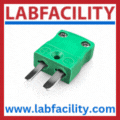
Posted to News on 12th Aug 2008, 16:20
Mitsubishi automation brings Denby into the 21st century
Mitsubishi Electric automation systems are helping Denby Pottery to maintain the delicate balance between traditional quality and contemporary productivity.

Clay was discovered at Denby in Derbyshire in the early 1800s and pottery has been made on the site since 1809. Although the principles of production are the same as they were 200 years ago, today's twenty-first century processes would not be recognised by Denby's founding fathers. What was very much a hands-on manual industry based on craft skills and subjective assessments has become highly automated, with every pertinent parameter monitored and measured to ensure optimum productivity and quality.
Like cooking, quality begins with ingredients and Denby is passionate about using the best clay. This is made into slip by mixing it with water in the cylinder house. Each mixer takes 1.3 tonnes of clay and 200kg of water and is lined with stone cobbles. It is driven through a 2.2m steel ring and nylon spur gear.
John Spriggs, Site Automation Engineer for Denby Pottery, explains: "The nylon gear teeth require a soft starting effect, so we use a Mitsubishi inverter. There are two gear tooth sensors and a single bolt in the ring. The position of these gives us an A, B & Z quatrature encoder. It sounds a bit Heath Robinson, but its spot on for a harsh environment."
PLC, inverter and HMI
The pulse train feeds into a compact Mitsubishi FX1S PLC (programmable logic controller), which is the sole means of control for this large machine. The PLC runs the mix sequence, the inverter to set the speed of rotation and a Mitsubishi E50 HMI (human-machine interface) for local diagnostics.
Spriggs comments: "It amuses me that this monster of a machine is controlled by such small components. You might think that they would not be up to the job, but they have been working away for some while now - and there are no plans to replace them yet."
Part of the slip blending process is the acid dosing station. This was relocated in January 2008 to reduce corrosion and has become relatively complicated because it is in fact two parallel tank systems. Nonetheless, it too is controlled by a local FX PLC and E50 HMI that provide the fine recipe control required.
Next stop is an effluent treatment panel, where a slightly larger FX2N operates alongside another E50. The slip is then dewatered and, as Spriggs explains: "This is an energy-hungry process, which is why we try to be accurate with the initial water dosing. There is one more pairing in the clay preparation process - controlling a magnetic filter that removes iron and cobalt impurities that, if left in, would leave splots on the finished product.
"Denby is the last pottery in the country to mix its own slip, clay and glazes on site. It is critical to our quality standards. If anything goes wrong here, we risk writing off a day or more's production. Yet the whole process is controlled by controllers that would sit in the palm of your hand."
The glaze mixing processes are similar to the slip mixing, except the quantities are an order of magnitude smaller and there is approaching 500 different recipes to cover all the different colours and finished.
Spriggs states: "We have got six tanks in the glaze department, all connected via Mitsubishi MX4hmi software. Overall control used to be via a PC, but that did not take to the rigours of the shop floor, so we have recently replaced it with one of Mitsubishi's newest offerings, the Q series PAC (programmable automation controller)."
Automated production
Denby has dozens of ranges of tableware, cookware, and tea sets, and each range consists of any number of bowls, plates, cups, mugs, trays, casseroles, tureens, lids, teapots, coffee pots, sugar bowls, flasks, etc. Despite this, many of the processes are highly automated.
Round items are perhaps the most automated in production. Typically the clay is extruded and cut into precision-sized blanks with a moving-head wire cutter. These are lifted onto moulds, spun and compressed into shape. They will then be conveyed through a microwave dryer where the pot is dried sufficiently for demoulding. The conveyor carries on, perhaps via an infrared dryer, to a hot air dryer.
Again it is usual to have two identical systems running in parallel. This offers several advantages: two products can be handled simultaneously; large runs can be handled at double speed; and each side can, in turn, be taken down for maintenance, resetting or repair so that production never stops.
Spriggs comments: "These discrete part moulding processes are quite different from the bulk liquid processing in the materials preparation stage - something that is reflected in the control cabinets. Typically a making machine may have a dozen axes of motion in each side, with a mixture of induction, stepper and servo motors, plus any number of sensors, fans, switches, etc.
"For many years we have favoured all-Mitsubishi control solutions, and the A-series mid- to large-range PLCs have been the stalwarts of our making machine control panels. Often we will also incorporate an FX or two for dedicated control of a particular function, such as foot polishing - an abrasive process to smooth the items' bottoms to perfection so that they do not scratch customers' best dining tables."
Alternatives to relays
Compact Mitsubishi Alpha controllers are used widely within the factory for 'relay replacement' applications, often programmed by the electrician installing the unit. Spriggs also likes to use Alphas on the glaze spray flow lines. Once again, it is a simple job, but critical for the level of perfection expected by and of Denby.
The final stage in pottery production is firing, mostly using tunnel kilns. Denby has four tunnel kilns, typically with one PLC controlling the burners and another controlling the haulage. Both PLCs will feed into an HMI so that the shop floor staff are kept fully aware of every nuance of control in this critical stage.
Spriggs says: "The tech spec for a pottery kiln sounds like it could pass muster at NASA. Our newest one is 120m long and it is expected to run continuously for the next ten years at least! Our specification for kiln use is the Q-series PAC."
With the newest kiln coming on stream, its predecessor has been taken out of service and, once it has cooled, will have its control system upgraded.
According to Spriggs, "It was still running with its original relay controls, but we are going to bring it right up to contemporary spec with a Q-series system. This is an exercise already successfully completed on our oldest tunnel kiln."
Spriggs and his colleagues have the challenge of replicating the achievements of their forebears and keeping the Denby plant up to the highest standard of modern control engineering, while never disrupting production, compromising quality or undermining the heritage of the brand.
Spriggs concludes: "We have several plans in formulation. We will be integrating the different parts of the plant with an MES (manufacturing execution system) - no doubt based on Mitsubishi kit - and we are just discovering the delights of robots for a variety of tasks, including machine loading and unloading. We expect this to be a role where Mitsubishi robots will continue to figure in the future. And, of course, we have to do our bit towards the environment, so we are having a big push on energy management."




